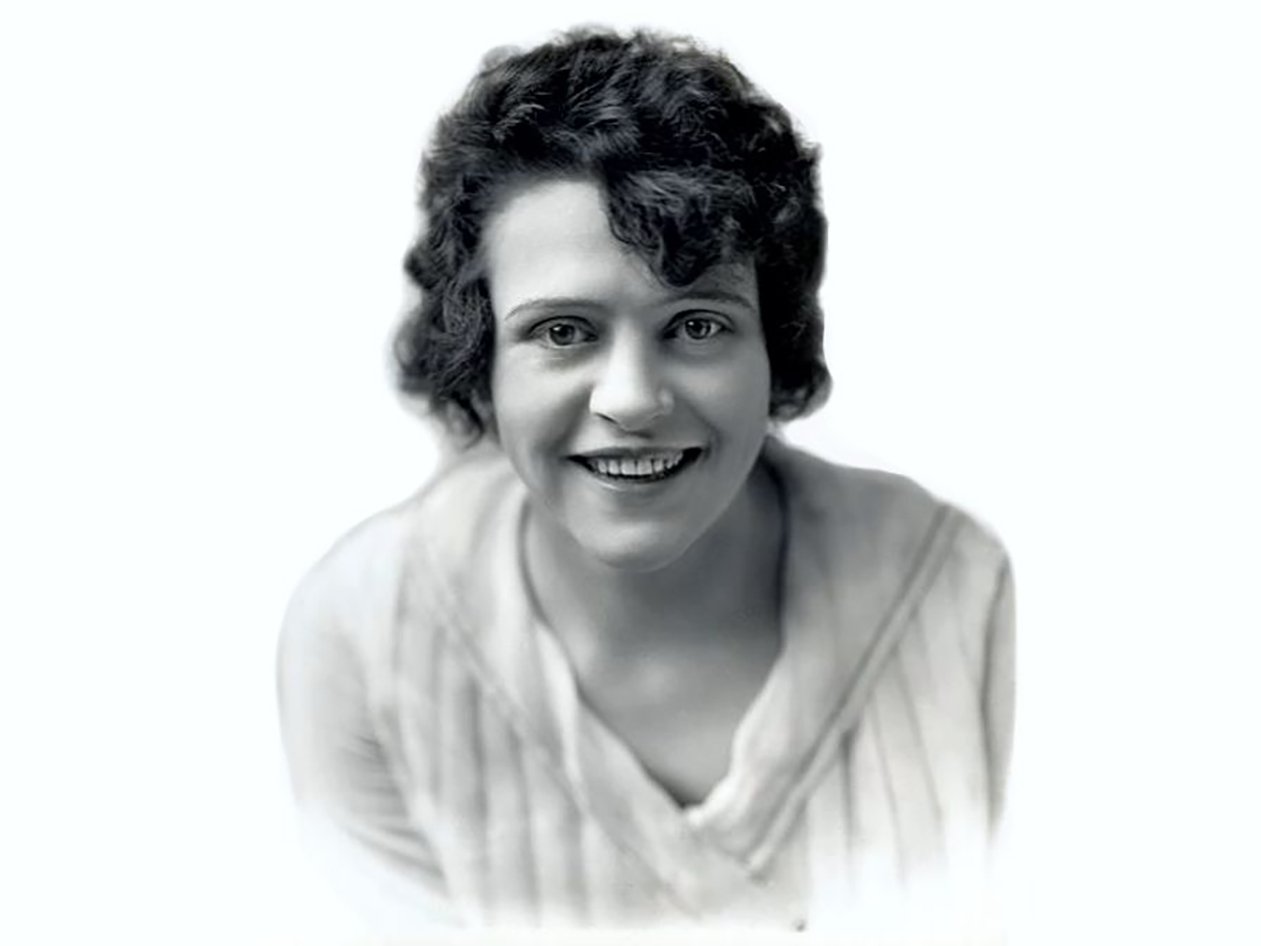
- Industry
Helen Gibson, First Hollywood Stuntwoman
Born in 1892 in Cleveland, Ohio Rose Wenger grew up a tomboy. Especially intrigued by the rodeo, she learned to ride and traveled as a trick rider with a Wild West Show by the age of 19. In Venice, California the show suddenly closed, and the entire cast was hired for the offseason to work in Westerns. Wenger’s first credited role was in 1912’s Ranch Girls on a Rampage.
She met cowboy extra Edmund (Hoot) Gibson in 1913 and they married and began working together. At one rodeo in Salt Lake City, they won all the prizes (relay race, standing woman race, trick riding, and pony express race). Both worked for Kalem Studios in Glendale, where The Hazards of Helen film series was made. This is where she performed what is said to be her most dangerous stunt, jumping from the roof of a train station onto a moving train. She landed perfectly, but due to the speed of the train, she rolled to the end of the car, grabbing an air vent and dangling over the edge.
Another stunt was standing atop a detached team of running horses, catching a rope dangling from a bridge to swing down from the horses and onto a train as it came under the bridge. Another one was chasing a runaway train on a racing motorcycle, riding through a shattering wooden gate up to a station platform and right through the open doors of a boxcar on a siding, and flying through the air to land on the flat car of a passing train.
After replacing the original lead actress until the series ended in 1917, she became known thereafter as Helen Gibson. An early action star, she was billed as “The Most Daring Actress in Pictures” and “The Railroad Girl” (since so many of her films seem to have involved trains).
Kalem folded that year. Universal put her under contract, where she appeared in two John Ford films, Rustlers and Gun Law. Then she signed with Capital Film Company, but they went out of business in under a year. A string of bad luck followed.
Hoot came back from World War I in 1918, but he couldn’t deal with his wife being more successful than he was, and they divorced in 1920, the year she founded Helen Gibson Productions. Her first film was No Man’s Woman, a Western about a kind-hearted saloon hostess who rescues a rancher’s child. Unfortunately, she ended up bankrupt before she could finish it. A year later, another studio released it as Nine Points of the Law.
Gibson starred in The Wolverine for the Spencer Production Company where they loved her performance and hired her for a second film, but before they began shooting, she ended up hospitalized with a burst appendix in 1921. After recovering, she took a job on a Western for an independent film company that folded without paying the cast or crew — ending up back in the hospital after being injured on horseback while filming.
She still appeared at rodeos and theaters to promote these films but no great opportunities in the film industry came her way, and her popularity began to fade. In 1924, she got a trick riding job with Ringling Bros. and Barnum & Bailey’s Wild West Show.
In 1927, Gibson returned to Hollywood and supported herself by doubling for stars like Ethel Barrymore and Marie Dressler and working as a stunt double and in bit parts. She married Clifton Johnson, a studio electrician, in 1935 and worked as an extra when he left for World War II in 1940. She also became treasurer of the stunt girls’ fraternal organization and appeared as a featured guest at benefit rodeos and horse shows.
In 1951’s Hollywood Story, she played a retired silent film actress. She continued to do character parts and work as an extra until 1961. That year, at the age of 69, her last role was as an uncredited townswoman in John Ford’s The Man Who Shot Liberty Valance. She retired in 1962 and moved to Oregon with Clifton.
Helen died of heart failure after a stroke in 1977 at age 85.
She is recognized as Hollywood’s first professional stuntwoman.

